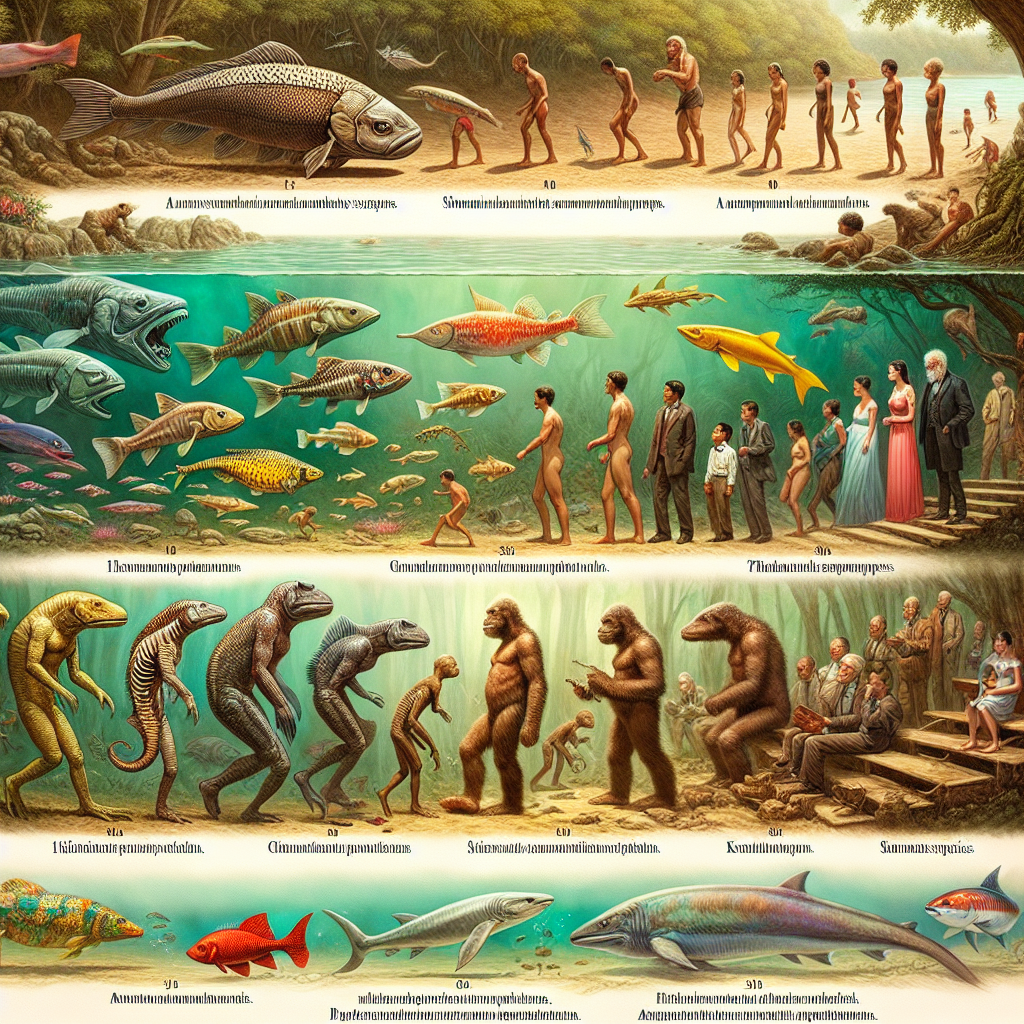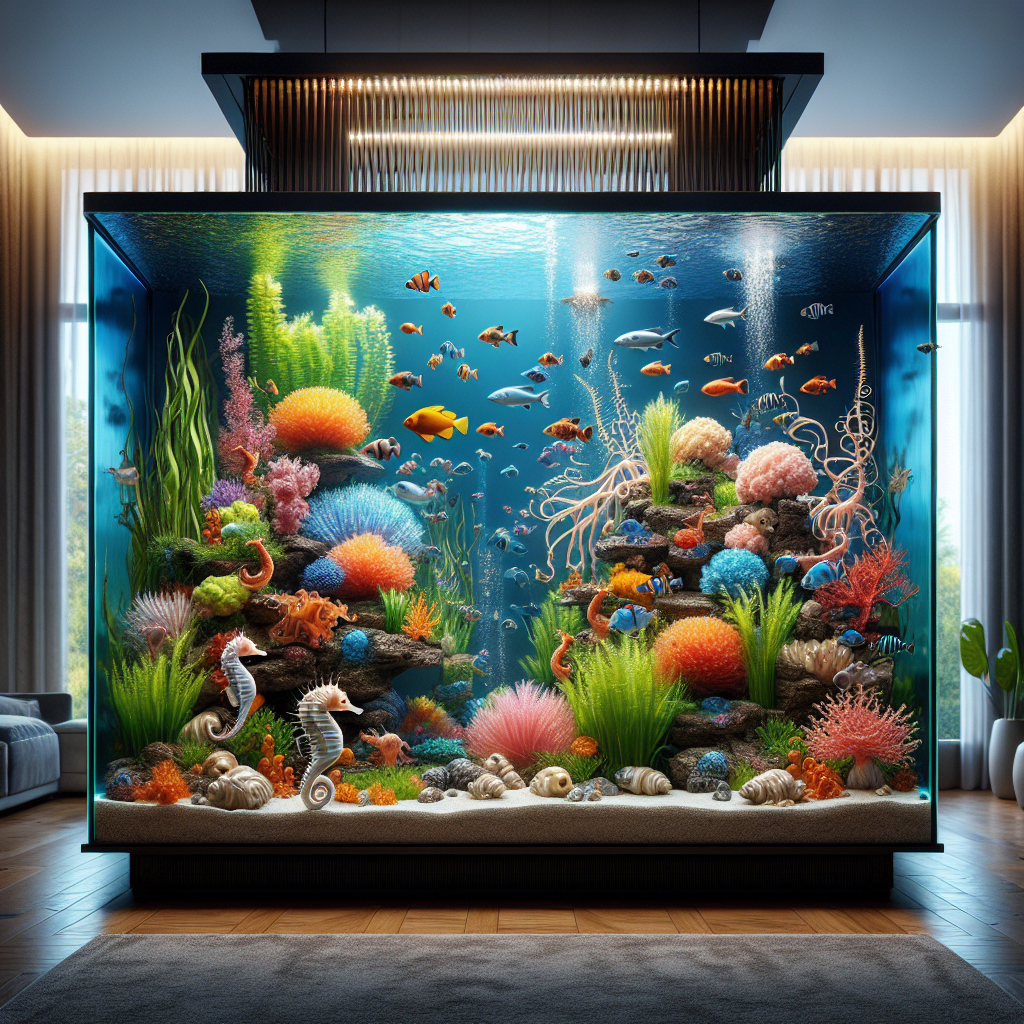Diving Into Aquatic History
The history of aquatic life is a tale that spans over 3 billion years, tracing back to the ancient oceans where life first began. From single-celled organisms to the vast array of marine creatures that populate our waters today, each living thing plays a role in the ecosystem. Exploring this lineage is not just about looking into the past, but understanding how aquatic life has adapted and evolved over eons.
Origins of Ocean Dwellers
The earliest evidence of life is found in ancient sedimentary rocks, where the faint imprints of simple organisms reside. These microbial mats, known as stromatolites, showcase the first communities of life, primarily cyanobacteria, which photosynthesized and played a crucial role in the oxygenation of Earth's atmosphere, paving the way for more complex life forms.
The Cambrian Explosion
Fast forward to approximately 541 million years ago, the Cambrian period marked an evolutionary burst, known as the Cambrian explosion. This era saw the rapid diversification of most major animal phyla we recognize today. It was a time when the seas teemed with life, and the foundations for modern ecosystems were laid.
Rise of Vertebrates
The spine is a central feature of vertebrates, organisms with backbones that include fish, amphibians, reptiles, birds, and mammals. The oldest known vertebrates are fish, which first appeared around 520 million years ago. The evolution of fins, jaws, and later, the ability to breathe air, allowed fish to dominate aquatic habitats. Learn more about modern fish species and their characteristics.

Mesozoic Marine Revolution
The Mesozoic Era, also known as the "Age of Reptiles", saw the rise of dinosaurs and also a revolution in marine life approximately 250 million years ago. The movement of tectonic plates created new sea ways which, coupled with the evolution of predatory marine reptiles and the diversification of mollusks like ammonites and belemnites, reshaped the marine food web.
Dinosaurs and Marine Reptiles
While dinosaurs roamed the land, the seas were ruled by formidable marine reptiles like ichthyosaurs and plesiosaurs. These creatures were not dinosaurs, but they were every bit as impressive, ruling the oceans for millions of years. For more on the Mesozoic marine life, check out this video from the Smithsonian "Ocean Through Time | Smithsonian Ocean".
Ice Age Influences
During the ice ages of the Pleistocene epoch, large glacial movements altered sea levels and climates drastically. This brought significant changes to marine habitats, influencing the distribution and evolution of aquatic life, including the ancestors of modern whales, seals, and other marine mammals.
Human Impact on Aquatic Evolution
As humans evolved and began to impact the world, aquatic ecosystems were no exception. Overfishing, pollution, and climate change have created new pressures on marine life, threatening the diversity of species and prompting new evolutionary adjustments for survival.
Today's Marine Biodiversity
The oceans are home to a staggering variety of life, from the tiniest plankton to the largest whale. Coral reefs, often described as the rainforests of the sea, are hotspots of biodiversity. Deep-sea environments, once thought to be lifeless, teem with organisms adapted to extreme conditions.
Pioneers of the Blue Planet
Creatures like cephalopods, crustaceans, and echinoderms represent just a snippet of marine diversity. These animals have shown remarkable evolutionary strategies, from the camouflage of octopuses to the regeneration abilities of sea stars.
Cultivating Aquatic Life in Aquariums
Witnessing the marvels of aquatic life doesn't have to be limited to the wild. Aquariums offer a window to the underwater world, letting us observe and learn about these fascinating creatures up close. For those interested in starting their own aquatic journey, consider these resources:

Our Ongoing Voyage
The story of aquatic life is an ongoing voyage of discovery. As technology advances, so does our ability to study and understand the intricate details of life below the waves. It inspires us to conserve and protect these extraordinary ecosystems for future generations to witness and enjoy. From prehistoric seas to your home aquarium, this journey is one of wonder and appreciation for the diverse life forms that call our blue planet home.